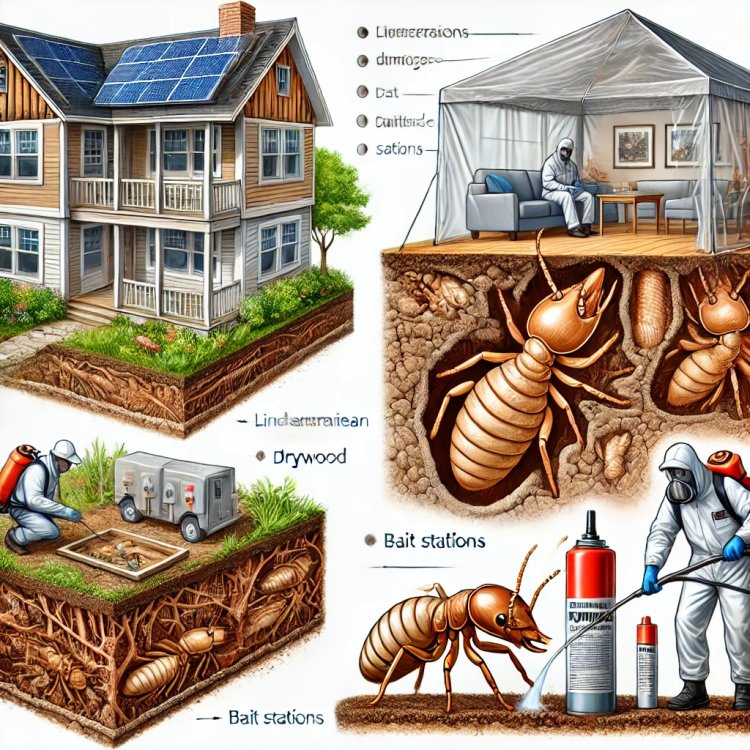Termite Pest Control
Termite Pest Control: Effective Strategies for Protecting Your Home
Termites are one of the most destructive pests, causing billions of dollars in property damage every year. Their ability to remain hidden while feeding on wooden structures makes them a serious threat to homeowners and businesses. Understanding termite behavior, prevention methods, and effective control strategies is crucial to minimizing their impact.

Understanding Termites
Types of Termites
There are three main types of termites:
-
Subterranean Termites – The most common and destructive type. They build underground colonies and create mud tubes to access food sources.
-
Drywood Termites – These infest dry wood and do not require contact with soil.
-
Dampwood Termites – They prefer moist wood and are usually found in decaying logs and stumps.
Signs of Termite Infestation
Recognizing termite infestations early can prevent extensive damage. Common signs include:
-
Mud tubes along walls and foundation
-
Hollow-sounding wood
-
Discarded wings near doors and windows
-
Small holes in wooden surfaces
-
Frass (termite droppings) near infested areas
Preventive Measures for Termite Control
1. Moisture Control
-
Fix leaks and reduce humidity levels.
-
Ensure proper drainage around the home.
-
Keep firewood and lumber away from the house.
2. Sealing Entry Points
-
Seal cracks and gaps in the foundation and walls.
-
Install screens on vents and windows.
3. Regular Inspections
-
Conduct annual termite inspections with a professional.
-
Monitor wood structures for signs of damage.
Professional Termite Treatment Methods
1. Liquid Termiticides
Applied around the foundation, liquid termiticides create a barrier that repels or kills termites upon contact.
2. Baiting Systems
Bait stations are placed around the property to attract termites. The bait contains slow-acting insecticides that termites bring back to the colony, effectively eliminating it.
3. Fumigation
For severe infestations, fumigation may be necessary. This method involves sealing the structure and introducing gas to eradicate termites.
4. Heat Treatment
Heat is used to raise the temperature inside infested areas to levels lethal to termites. This is commonly used for drywood termites.
DIY Termite Control Methods
While professional treatment is recommended for severe infestations, some DIY methods can help in early-stage termite issues:
-
Boric Acid – A natural pesticide that disrupts termite digestion.
-
Orange Oil – Contains d-limonene, which kills termites on contact.
-
Diatomaceous Earth – Dehydrates termites and eliminates them over time.
Choosing the Right Termite Control Service
When hiring a professional termite control service, consider the following:
-
Experience and Reputation – Check reviews and references.
-
Licensed and Insured – Ensure the company is certified.
-
Treatment Options – Compare different methods and their effectiveness.
-
Warranty and Follow-Up Services – A good company will offer warranties on their treatments.










